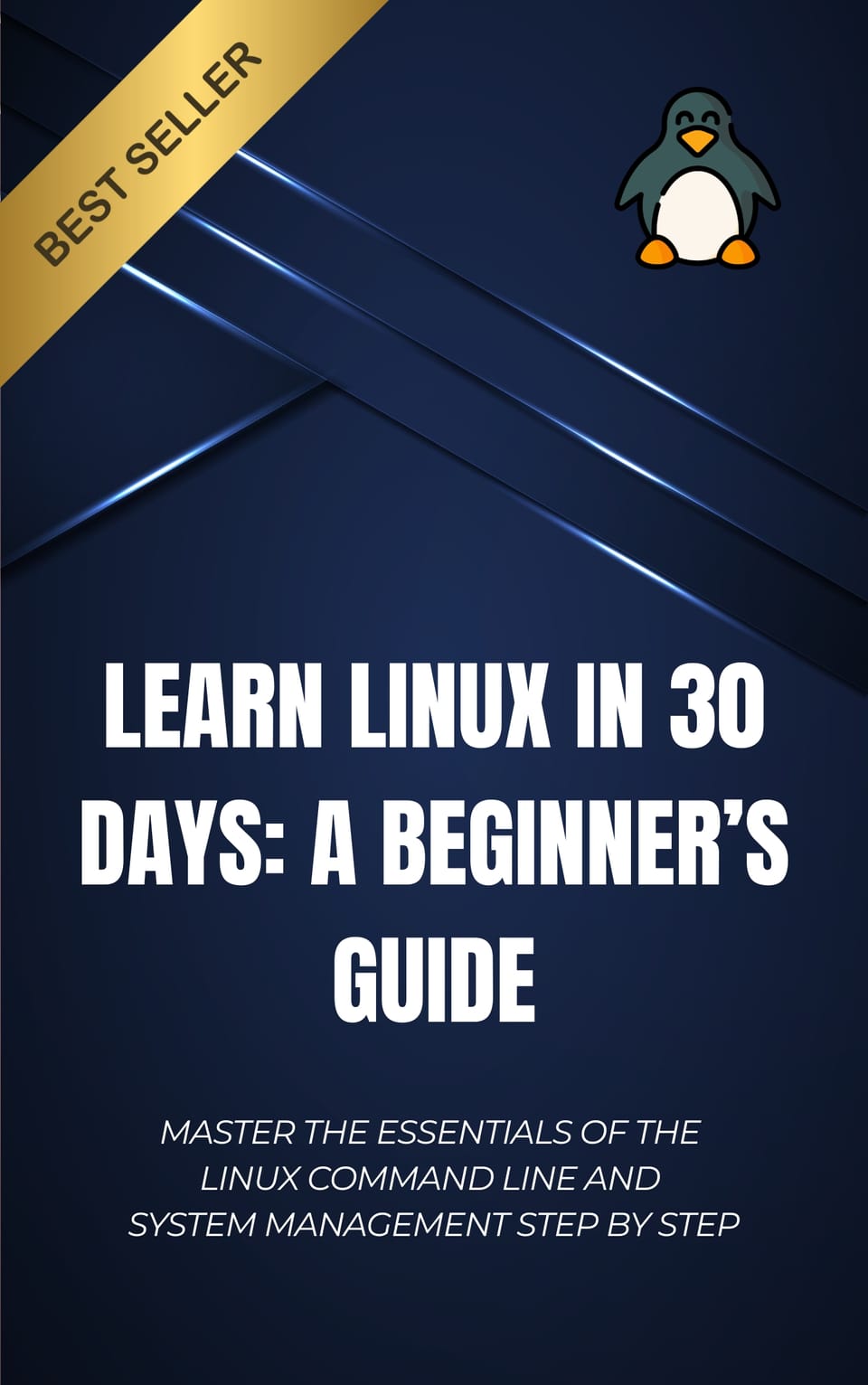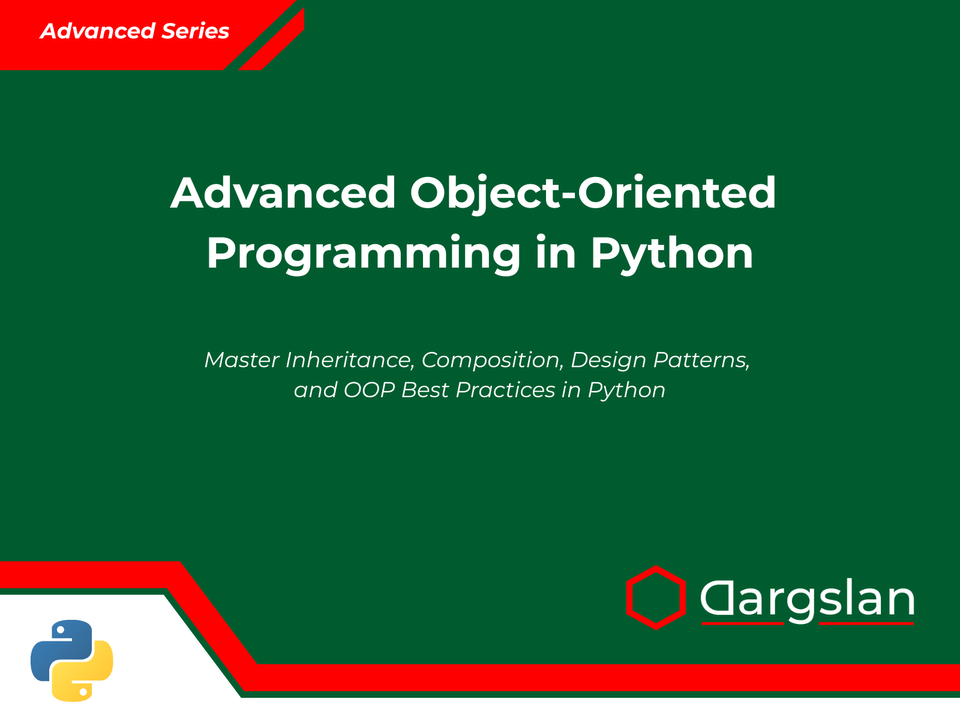Book Review: Your First Python Web Scraper
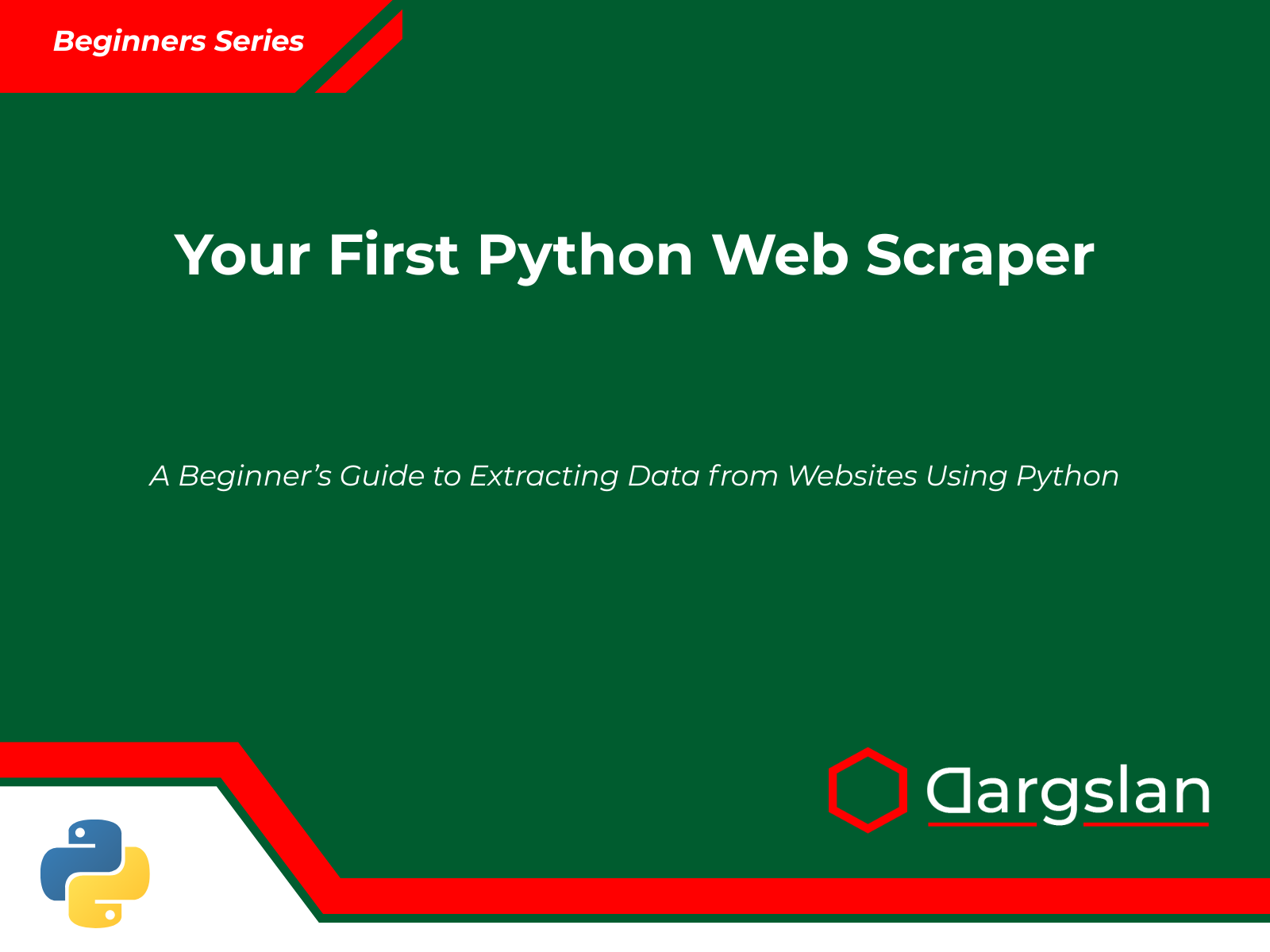
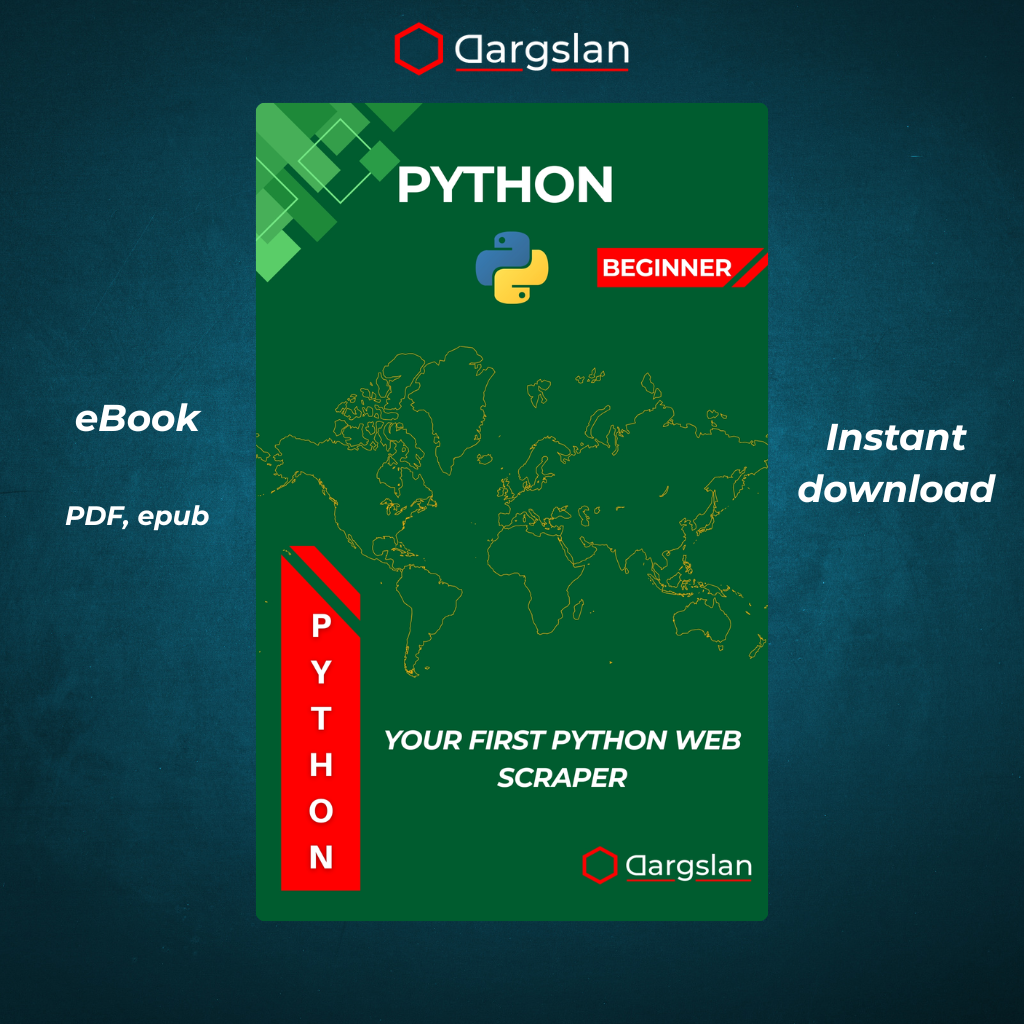
Your First Python Web Scraper
A Beginner’s Guide to Extracting Data from Websites Using Python
Your First Python Web Scraper: A Comprehensive Book Review
Introduction: The Gateway to Python Web Scraping Mastery
In the data-driven digital landscape of 2023, the ability to extract and analyze web data automatically has become an invaluable skill for professionals across industries. "Your First Python Web Scraper: A Beginner's Guide to Extracting Data from Websites Using Python" emerges as an essential resource for anyone looking to harness Python's powerful capabilities for collecting web data systematically and efficiently.
Authored by Dargslan, this comprehensive guide takes readers on a carefully structured journey from basic Python concepts to building fully functional web scrapers. The book stands out in the crowded programming literature space by focusing exclusively on making web scraping accessible to beginners while providing enough depth to satisfy intermediate Python enthusiasts.
Why Python Web Scraping Matters in Today's Data Economy
Web scraping—the automated extraction of data from websites—has become a fundamental skill in the modern professional's toolkit. From market researchers gathering competitive intelligence to data scientists building comprehensive datasets, web scraping enables the collection of information at scale that would be impossible to gather manually.
Python has emerged as the dominant language for web scraping due to its readable syntax, robust libraries, and powerful data handling capabilities. This book recognizes this synergy and delivers a learning experience that simultaneously builds Python proficiency and web scraping expertise.
Book Structure: A Progressive Learning Path
The book follows a logical progression through ten carefully crafted chapters, supplemented by valuable appendices that serve as reference materials and extensions to the main content. This structure enables readers to build skills incrementally, with each chapter laying the foundation for more advanced techniques.
Chapter 1: What Is Web Scraping?
The journey begins with a thorough introduction to web scraping concepts, establishing the fundamental understanding of what web scraping entails and why Python excels at this task. The author expertly contextualizes web scraping within the broader data collection landscape, discussing:
- The difference between web scraping and API usage
- Ethical considerations and legal boundaries
- Common use cases across industries
- Why Python has become the go-to language for web scraping projects
This chapter sets the stage by helping readers understand not just the how but the why behind web scraping with Python, creating a purpose-driven learning experience from the outset.
Chapter 2: Getting Set Up
The second chapter tackles the often intimidating process of establishing a functional Python environment optimized for web scraping. It covers:
- Installing Python with step-by-step instructions for Windows, macOS, and Linux
- Setting up virtual environments for project isolation
- Installing essential packages including requests and BeautifulSoup4
- Configuring a code editor for Python development
- Verifying the installation with a simple test script
What distinguishes this chapter is its attention to troubleshooting common setup issues, ensuring that readers can overcome technical hurdles before diving into the core content.
Chapter 3: Understanding HTML Structure
Before extracting data from web pages, readers must understand how web pages are structured. Chapter 3 provides a concise yet comprehensive overview of HTML fundamentals:
- Basic HTML document structure
- Common HTML tags and attributes
- The Document Object Model (DOM)
- Using browser developer tools to inspect page elements
- How CSS selectors work for targeting specific content
The chapter includes practical exercises that help readers develop the skill of "thinking like a web scraper" – identifying patterns in HTML that can be leveraged for systematic data extraction.
Chapter 4: Making HTTP Requests
With the environment set up and HTML basics covered, the book moves into the practical implementation of web requests using Python's requests library:
- Understanding the HTTP protocol
- Making GET and POST requests programmatically
- Handling response codes and errors
- Working with headers and cookies
- Implementing request timeouts and retries
Through clear examples and guided practice, readers learn to interact with web servers programmatically – the first critical step in any web scraping workflow.
Chapter 5: Parsing with BeautifulSoup
The fifth chapter introduces BeautifulSoup, Python's premier library for parsing HTML and XML documents:
- Creating soup objects from HTML content
- Understanding BeautifulSoup's parsing models
- Finding elements by tags, attributes, and CSS selectors
- Navigating the parse tree effectively
- Handling malformed HTML gracefully
This chapter excels in making the abstract concepts of HTML parsing concrete through well-annotated code examples and visualizations of the parsing process.
Chapter 6: Navigating and Extracting Content
Building on the parsing foundations, Chapter 6 delves deeper into the practical aspects of content extraction:
- Targeting specific data within complex web pages
- Extracting text, attributes, and nested content
- Using regular expressions with BeautifulSoup
- Handling different data types (text, numbers, dates)
- Cleaning and normalizing extracted data
The real-world examples in this chapter particularly shine, demonstrating techniques for extracting data from common web elements like tables, lists, and dynamic content.
Chapter 7: Saving Scraped Data
After successfully extracting data, readers learn how to persistently store this information in various formats:
- Saving to CSV files for spreadsheet compatibility
- Working with JSON for structured data
- Basic database storage with SQLite
- Exporting to Excel files
- Implementing incremental data storage
The chapter includes important discussions about data integrity, encoding issues, and best practices for organizing scraped data for subsequent analysis.
Chapter 8: Scraping Multiple Pages
Most valuable web scraping projects extend beyond a single page. Chapter 8 addresses the challenges of multi-page scraping:
- Implementing pagination strategies
- Following links to related content
- Building recursive scrapers for site traversal
- Managing state during large scraping operations
- Throttling requests to avoid overwhelming servers
This chapter stands out for its practical approaches to scaling scraping operations while maintaining reliability and respecting target websites.
Chapter 9: Using Headers and User-Agents
As websites become increasingly sophisticated in detecting scrapers, Chapter 9 provides crucial techniques for responsible scraping:
- Customizing request headers to mimic browsers
- Rotating user-agents to avoid detection
- Understanding and respecting robots.txt
- Implementing delays between requests
- Handling CAPTCHAs and other anti-scraping measures
The ethical considerations woven throughout this chapter emphasize the importance of respectful and legitimate web scraping practices.
Chapter 10: Mini Projects for Practice
The final chapter consolidates learning through three complete mini-projects:
- A news headline aggregator that collects and categorizes articles
- A weather data collector that compiles historical patterns
- A product price monitor that tracks e-commerce listings
Each project walks readers through the entire scraping workflow from planning to implementation, reinforcing the concepts from previous chapters while demonstrating how they combine in real-world scenarios.
Appendices: Extending Your Knowledge
The book's appendices serve as valuable references and extensions:
- HTML Tag Cheat Sheet: A quick reference for the most commonly scraped HTML elements
- Error Fixing Guide: Troubleshooting common issues with requests and parsing
- Challenge Exercises and Solutions: Additional practice problems with detailed solutions
- Tools to Go Further: Introduction to advanced tools like Selenium for JavaScript-heavy sites, API integration alternatives, and the Scrapy framework
These supplementary materials enhance the book's value as both a learning resource and an ongoing reference guide for Python web scraping projects.
Technical Depth and Accessibility
What makes "Your First Python Web Scraper" particularly effective is its balance between technical depth and accessibility. The author manages to explain complex concepts in straightforward language without oversimplification. Code examples are thoroughly annotated, with attention to both what the code does and why certain approaches are taken.
For Python beginners, the gentle introduction to programming concepts alongside web scraping techniques creates a contextual learning environment where abstract programming ideas become concrete through practical application.
For those with programming experience in other languages, the book serves as an efficient onramp to Python's web scraping ecosystem, highlighting Python-specific idioms and libraries without dwelling unnecessarily on basic programming concepts.
Practical Applications and Skills Transferability
The web scraping skills taught in this book extend well beyond the specific examples provided. Readers will gain capabilities applicable to numerous professional and personal scenarios:
- Data Science: Gathering datasets for analysis and machine learning projects
- Market Research: Monitoring competitor pricing and product information
- Content Aggregation: Building specialized information repositories
- Academic Research: Collecting data for studies and publications
- Process Automation: Replacing manual data collection with automated systems
- Financial Analysis: Tracking stock information and economic indicators
Moreover, the Python skills developed transfer to other programming domains, providing a foundation for further exploration of Python's data analysis, automation, and web development capabilities.
Who Should Read This Book
This book is ideally suited for:
- Programming newcomers seeking a practical introduction to Python through a useful skill
- Data analysts and scientists looking to expand their data collection capabilities
- Web developers wanting to understand automated interaction with web content
- Business professionals needing to gather web data for competitive intelligence
- Students working on research projects requiring systematic data collection
- Automation enthusiasts interested in eliminating manual data gathering tasks
The prerequisite knowledge is minimal—basic computer literacy and willingness to learn are sufficient to begin the journey.
Comparison with Other Resources
In the crowded field of Python and web scraping resources, "Your First Python Web Scraper" distinguishes itself through:
-
Focused Scope: Unlike general Python books that touch briefly on web scraping, this volume provides comprehensive coverage of this specific skill.
-
Progressive Complexity: The book builds knowledge systematically, avoiding the common pitfall of jumping too quickly to advanced techniques before establishing fundamentals.
-
Ethical Emphasis: Throughout the text, ethical considerations are integrated rather than treated as an afterthought, promoting responsible scraping practices.
-
Practical Orientation: Every concept is tied to practical application, avoiding purely theoretical discussions in favor of usable skills.
-
Updated Techniques: The content reflects modern web architecture and contemporary scraping challenges, unlike older resources that may not address current anti-scraping measures.
The SEO Advantage for Readers
An interesting meta-aspect of this book is that it equips readers with skills increasingly valuable in the SEO industry itself. As search engine optimization grows more data-driven, professionals who can systematically gather and analyze web information gain significant advantages in:
- Competitor analysis
- SERP (Search Engine Results Page) monitoring
- Content gap analysis
- Backlink profile assessment
- Keyword opportunity identification
This connection between web scraping skills and SEO practice creates a powerful synergy for digital marketers and SEO specialists reading this book.
Ethical Considerations and Responsible Scraping
A standout feature of "Your First Python Web Scraper" is its consistent emphasis on ethical web scraping practices. The author doesn't merely teach the technical how-to but dedicates significant attention to:
- Respecting website terms of service
- Understanding robots.txt directives
- Implementing appropriate request delays
- Minimizing server impact through efficient scraping
- Properly identifying scraping activities through user-agent declarations
- Considering privacy implications when gathering and storing data
This ethical framework helps readers develop not just technical skills but professional judgment about appropriate scraping practices.
Future-Proofing Your Skills
Web technologies evolve continuously, but the fundamentals of programmatic data extraction remain relatively stable. This book strikes an effective balance between teaching enduring concepts and addressing current technical specifics:
- Core HTTP principles and Python's requests mechanism
- HTML structure and parsing approaches
- Data selection and extraction patterns
- Storage and organization strategies
By focusing on these fundamentals while acknowledging evolving challenges like anti-bot measures, the book provides skills with lasting relevance in the web scraping domain.
Learning Outcomes: What You'll Gain
By working through "Your First Python Web Scraper," readers can expect to develop:
-
Technical Skills:
- Proficiency with Python's requests and BeautifulSoup libraries
- Understanding of HTML structure and CSS selectors
- Data extraction and transformation capabilities
- Storage and export techniques for various formats
-
Methodological Approaches:
- Systematic web content analysis
- Strategic planning for scraping projects
- Troubleshooting and problem-solving for data extraction
- Scaling approaches for larger scraping operations
-
Professional Awareness:
- Ethical and legal considerations in web scraping
- Performance optimization for efficient data collection
- Error handling and resilience in automated systems
- Documentation practices for scraping projects
These outcomes position readers to confidently tackle web scraping challenges across various domains and complexity levels.
Conclusion: A Valuable Investment for Data-Driven Professionals
"Your First Python Web Scraper" delivers exceptional value for anyone seeking to master the art and science of automated web data extraction. Through its methodical approach, comprehensive coverage, and practical orientation, the book transforms complete beginners into capable practitioners of Python-powered web scraping.
In an increasingly data-centric professional landscape, the ability to efficiently gather and process web information represents a significant competitive advantage. This book provides that advantage through clear instruction, relevant examples, and thoughtful explanation of both technical mechanisms and strategic approaches.
Whether you're enhancing your professional toolkit, pursuing academic research, or simply exploring the fascinating intersection of programming and web data, "Your First Python Web Scraper" offers a reliable, accessible path to mastering this valuable skill set.
For beginners eager to enter the world of Python programming with an immediately practical focus, or for experienced developers looking to add web scraping to their capabilities, this book stands as an essential resource that will yield returns far beyond the investment of time and effort required to absorb its lessons.
This review covers "Your First Python Web Scraper: A Beginner's Guide to Extracting Data from Websites Using Python" by Dargslan. The book provides a comprehensive introduction to web scraping using Python, suitable for beginners and those looking to expand their data collection capabilities through automated means.
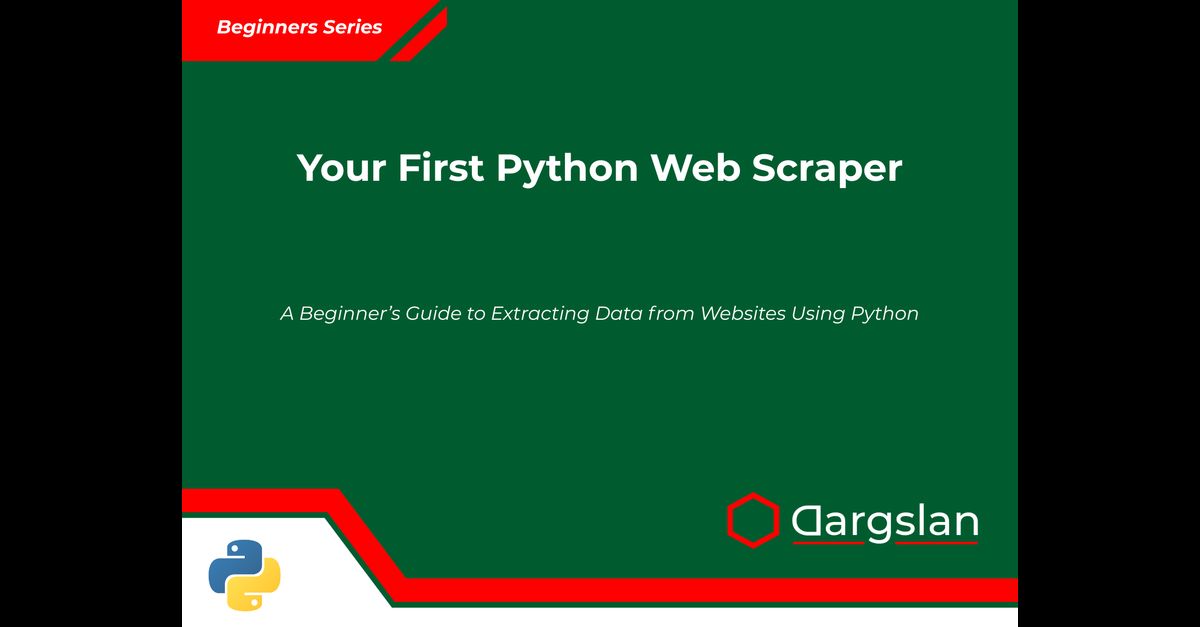
Your First Python Web Scraper




